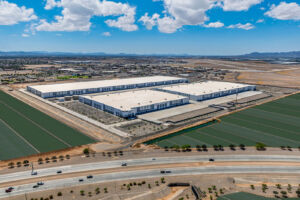A well-designed route-to-market (RTM) strategy determines how a product reaches its target audience via different distribution channels. Businesses that prioritize RTM can enjoy expanded market reach, optimized operational costs, and improved customer satisfaction. In contrast, those neglecting RTM risk lost sales, and dissatisfied customers. In this blog, we’ll explore why an effective RTM strategy is essential for sustainable growth, profitability, and customer loyalty.
MORE NEWS: Experience AZ: 10 Arizona restaurants with an amazing view
What Is a Route to Market Strategy
A Route to Market strategy is a structured plan that defines how a business delivers its products or services to its target customers efficiently. It encompasses critical decisions related to distribution channels, sales methodologies, logistics, and customer engagement. At its core, an RTM strategy answers the question: “How do we get our product into the hands of our ideal customers?”.
An effective RTM strategy identifies the most suitable distribution channels — whether that’s direct sales, wholesalers, e-commerce platforms, or retail partnerships — ensuring that products reach customers in the most cost-efficient and timely manner. It also includes selecting the right logistics partners and optimizing sales territories to maximize coverage.
For example, a consumer goods company might distribute through supermarkets and online retailers, while a tech company might focus on direct sales or specialized distributors. In both cases, a clear RTM strategy ensures businesses optimize resources, reduce costs, and meet customer expectations, laying the foundation for sustainable growth and profitability.
Why Does Route to Market Matter for Your Business
Now that we understand what a Route to Market (RTM) strategy entails, we need to take a deeper look at why it benefits businesses.
- Enhanced Sales Coverage: An effective Route to Market (RTM) strategy helps businesses identify new markets and reach more customers. By selecting optimal sales territories and distribution channels, companies can expand their geographical reach and penetrate untapped markets. According to a McKinsey study, companies with well-defined RTM strategies achieve up to 15% higher market share compared to those with inefficient strategies. Additionally, businesses that optimize their RTM processes can reduce customer acquisition costs by 20-30% while expanding into new regions. This strategic approach ensures businesses maximize sales potential and grow efficiently without significantly increasing costs.
- Optimized Channel Selection: RTM allows businesses to choose the right distribution channels that align with their target audience. Whether through direct sales, wholesalers, online marketplaces, or retail outlets, selecting appropriate channels ensures products are available where customers are most likely to purchase. Research by Forrester shows that 58% of consumers prefer purchasing through multiple channels, and businesses with a multichannel approach achieve over 25% higher customer engagement rates.
- Cost Efficiency: With a strategic RTM approach, businesses can streamline logistics and distribution processes, reducing operational costs. According to Deloitte, companies with optimized supply chains can achieve 15% lower supply chain costs and 50% faster order-to-delivery cycles. By eliminating inefficiencies in distribution and logistics, businesses can reinvest savings into areas like marketing, product development, or customer service.
- Improved Customer Satisfaction: When products are consistently available through the right channels, it significantly enhances the customer experience. Timely and convenient access to products builds trust and loyalty, leading to repeat business. According to PwC, 86% of customers are willing to pay more for a better shopping experience, emphasizing the importance of consistent product availability through effective RTM.
- Adaptability to Market Changes: A robust RTM strategy allows businesses to respond quickly to changing market trends, consumer behaviors, or disruptions. Research by Accenture highlights that 93% of executives believe that organizational agility is crucial for business success. Flexible RTM strategies enable companies to pivot quickly in response to supply chain disruptions, economic changes, or evolving consumer preferences.
In an increasingly dynamic marketplace, having the right RTM approach ensures your business can scale, reduce operational inefficiencies, and remain flexible to changing trends. Companies that fail to prioritize RTM risk wasted resources, missed sales opportunities, and dissatisfied customers who may look elsewhere.
How Route to Market Improves Customer Satisfaction
When customers can easily find products through their preferred channels — be it retail stores, e-commerce platforms, or direct sales — it eliminates friction in the buying process. This accessibility not only increases convenience but also builds trust and reliability. Customers who receive products promptly and through their desired method are more likely to feel valued and satisfied.
RTM also enhances the consistency of product availability. Efficient inventory management and streamlined logistics ensure that popular products are always in stock, avoiding delays and frustration caused by out-of-stock items. Furthermore, by understanding customer needs and preferences through RTM analysis, businesses can provide personalized experiences and better service.
The Role of Flexibility and Adaptability in RTM
Adaptable RTM strategies allow businesses to pivot between distribution channels, logistics partners, and sales methods as needed. For instance, businesses with adaptable RTM strategies can identify alternative suppliers or distribution routes to avoid delays if a supply chain disruption occurs.
Flexibility also helps businesses seize new opportunities. A responsive RTM approach enables companies to capitalize on a trend or demand surge in a particular market segment without significant delays. This adaptability minimizes risk, improves resilience, and ensures that customers continue to receive products efficiently.
Conclusion
The importance of RTM lies in its ability to reduce inefficiencies, minimize costs, and provide flexibility to adapt to changing market conditions. In today’s fast-paced business environment, an effective RTM strategy allows companies to stay competitive, respond to disruptions, and seize new opportunities quickly.
Neglecting RTM can result in lost sales, poor customer experience, and inefficiencies that hinder growth. Businesses that invest in a clear, adaptable RTM strategy are better positioned to meet customer demands, improve satisfaction, and drive sustainable growth. Prioritizing RTM is essential for staying relevant and achieving long-term success.




